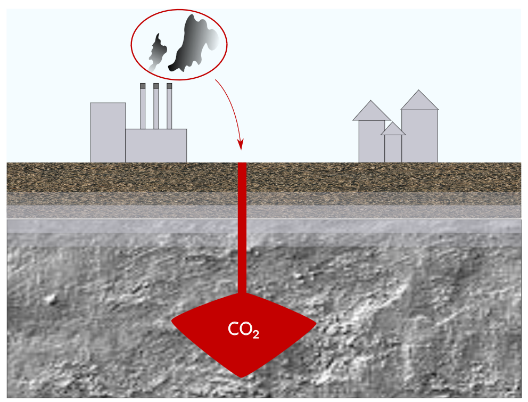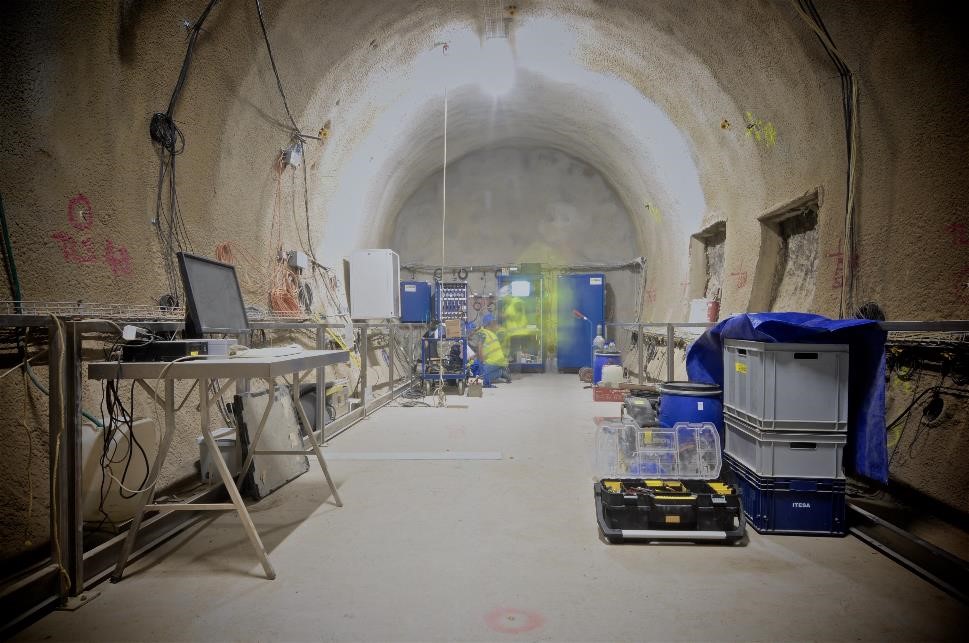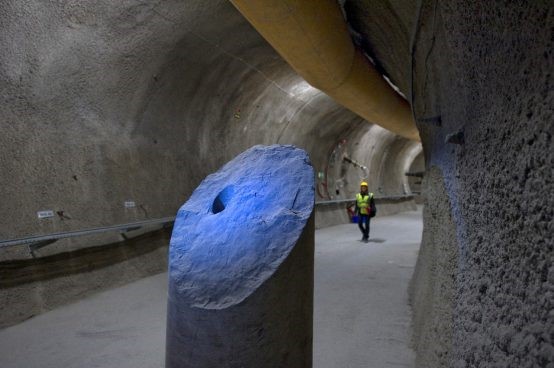Promising findings on the potentials of CO2 sequestration
Successful geological sequestration of carbon dioxide (CO2) relies on the sealing capability of low permeability rocks (caprock) overlying permeable rocks (reservoir) where CO2 is stored. Several projects within the Work Package 1 of the SCCER-SoE successfully studied the trapping efficiency of a potential caprock during CO2 injection. Scientists from the Lab of Soil Mechanics at EPFL and from the Rock Physics and Mechanics Lab at ETHZ developed a systematic lab-scale testing procedure to assess the sealing capacity of shale caprock to CO2 injection. The experiments are carried out in the framework of a large European project (ELEGANCY), involving also large scale injection tests in the Mont Terri Underground Research Laboratory. To tackle the potential of induced micro-seismicity related to CO2 sequestration, scientists from EPFL, ETHZ and Swiss Seismological Service (SED), developed numerical models to evaluate the geo-mechanical response of the caprock to prolonged injection of CO2 enriched fluids.
In carbon geo-sequestration, CO2 is captured from large emitters, purified, compressed and injected in deep rock reservoirs of big porosity. However, CO2 is buoyant as it has a lower density than the resident formation brine and thus flows upwards in the shape of a plume. The upward movement of the plume continues until it encounters a low-permeability caprock. The caprock provides a physical barrier and prevents migration and leakage of the buoyant CO2 from the storage location to other places in the subsurface, such as to shallow potable ground water levels, or even to the surface. Therefrom arises the necessity for a solid study on the caprock’s behaviour at CO2 injection.
Argillaceous formations such as the Opalinus Clay are potential caprocks, thanks to their favourable properties involving low permeability, self-sealing properties and high sorption capacity.
Successful caprock characterisations at lab scale
Scientists from the Lab of Soil Mechanics (LMS) at EPFL achieved important advances at lab-scale towards the characterisation of the behaviour and the properties of Opalinus Clay for a safe geological sequestration of CO2, and the identification of the relevant processes related to shale-CO2 interactions. They successfully completed an assessment of the hydro-mechanical response of clay rock samples (on a centimetre scale) during CO2 injection and they quantified the material’s so-called entry-pressure. This pressure represents the maximum CO2 overpressure that the reservoir rock, in which the CO2 is stored, can sustain. If the entry pressure becomes too great, it displaces the pore water in the pores of the reservoir and the CO2 penetrates into the caprock. Hence, there is a strong relation between the entry-pressure and CO2 trapping efficiency of the caprock. The material the scientists used is Opalinus Clay originates from the Mont Terri Underground Research Laboratory (URL).
Scientists from the Rock Physics and Mechanics Lab at ETHZ teamed up with the Digital Rocks Lab at Imperial College London to study the effects of deformation and swelling on flow within Opalinus Clay fractures using novel X-ray computed tomography techniques. Their collaborative effort showed how shearing of fractures, a potential consequence of micro-seismicity, can open flow pathways, but that subsequent flow of water through these fractures quickly seals up the void space, thereby limiting leakage through the caprock.
Promising first results from real scale CO2 injection tests
Under the umbrella of the ELEGANCY-ACT project, the group also studied the possibility of caprock leakage of CO2 at a larger scale by in-situ CO2 injection tests at the Mont Terri URL. In a unique setup, the scientists investigated how the exposure to CO2-rich fluid affects the sealing capacities of a caprock hosting a fault – the Mont Terri Main Fault – and evaluated potential leaks.
After characterizing the fault’s transmissivity and permeability by water injection tests, while monitoring for eventual micro-seismic events, the scientists launched a long-term injection of CO2-saturated water at constant pressure and at a rate of approximately 0.04 millilitres per minute, to evaluate rock-CO2 interaction. The first results already after three months were promising, showing fault self-sealing soon after the CO2 injection, probably caused by swelling of the caprock. The injection is ongoing since 13 moths at present.
The final and future goal is to inject CO2-saturated water into the fault core for a few more weeks while monitoring its geo-mechanical response. Additional tracers and transmissivity tests at regular time intervals helped to determine the fluid path evolution and to infer the potential diffusion of CO2 from the water.
The support of numerical simulations
Additional to the experimental approach, scientists from EPFL, ETHZ and SED performed numerical simulation to characterize the geo-mechanical behaviours of the caprock in the Mont Terri experiment. They evaluated the response of the fault to long term injection performed with water. Results of the modelling confirmed the low permeability of the fault and suggested a possible fracture-like connection between injection and monitoring points. Results suggested also that the permeability reduces in the region near the injection. A preliminary interpretation is that porosity changes because of swelling effects of the clay, as observed in the lab experiments on rock samples. More complex models are under development, to address other key processes such as poroelastic effects and minor fracture reactivation that are important in the evaluation of potential micro-seismicity.



